A Couple Transforms A Family Farm To Bring Picturesque Tulips To Alabama
Celebrating prime tulip time.

Robbie Caponetto
“When I was a boy, my dad would take me to visit Colonial Williamsburg to see the gardens full of tulips. I was immediately drawn to them,” says Seth Hubert, who owns Hubert Family Farms in New Market, Alabama, with his wife, Kaylee. Seth’s early interest in agriculture was hardly surprising given his roots. As a child, he watched his dad sow cotton and other row crops on the same land that his great-great-grandfather had farmed in the 1800s. Seth would confidently tell anyone who asked that he, too, wanted to be a farmer when he grew up. “I never thought that I would do anything else,” he recalls. “But then sometimes things happen, and you get thrown a curveball in life.”
When Seth’s father passed away, the family farm shrank from 2,000 to 300 acres. And upon his return home after college, Seth realized that cotton and other row crops wouldn’t cut it if he wanted to leave the land to his children one day. “It all came together when I was sitting on the steps of the house watching my then-1-year-old daughter, Addie, pick flowers,” he says. Tulips, like the ones he fell in love with in Williamsburg, were the ticket.
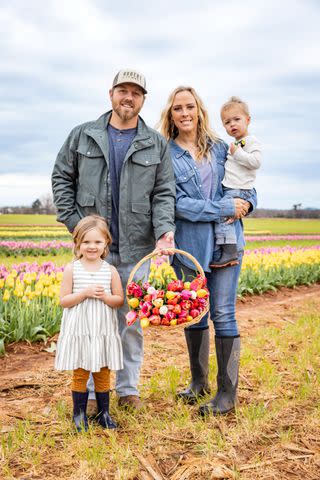
Robbie Caponetto
Gather Together: Seth and Kaylee Hubert enjoy picking flowers with their two children, Addie and Atlas.Seth had seen other successful you-pick farms in the area and was fascinated by the idea of re-creating the Netherlands’ iconic flower fields in Alabama. With some direction from friends at Wooden Shoe Tulip Farm in Oregon, the Huberts planted 60 bulb varieties on 4 acres for their first harvest in 2021. Kaylee took on the role of organizing the rows and planning the position of each kind to create a vibrant-looking field that blooms throughout March. “Every flower is put in its spot on purpose,” she says.
The reality is that cultivating tulips in the South is not without its challenges. On a visit to the Huberts’ farm, a Dutch bulb producer and mentor told Seth that it was the harshest climate where he’d seen them grown en masse. Due to the region’s temperate conditions and warm, early springs, the flowers can bloom prematurely, resulting in shorter stems. The humidity also makes storing bulbs difficult, so they are treated as annuals, with new ready-to-use bulbs arriving from the Netherlands each November. They start planting them after Thanksgiving, and shoots begin appearing in late January. The ‘Rosy Delight’ selection is the first to blossom in early March. The rest of their flowers pop up throughout the remainder of the month in a naturally staggered pattern, thanks to a mix of varieties with different bloom times.
The farm opens to the public for harvest season, which lasts for about three weeks during March. Peak tulip time might be short-lived, but the Huberts are building a legacy to last. “Never in a million years did I dream that I would be growing tulips,” says Seth. “But it’s about making sure the next generation has the opportunity to live on the farm—to provide something that I can leave my kids.”

Robbie Caponetto
Plant Your Own
Yes, you can have these beauties in your own backyard. When you first get the bulbs, dry them off and store them in a place with good airflow. This will minimize moisture and help prevent fungus growth. To prepare for planting, you will need to mimic their natural chill cycle by storing the bulbs in a 35- to 45-degree refrigerator for about 10 weeks. For the South, the Huberts recommend starting the process in early October to be ready for the next step. Then in late November, place the bulbs 4 to 6 inches deep with their pointed ends up (to lengthen the stems) and about 2 to 4 inches apart in loose, fertile soil. Refrain from watering them until you begin to see green breaking through the ground. Expect to have blooms in your yard by March.
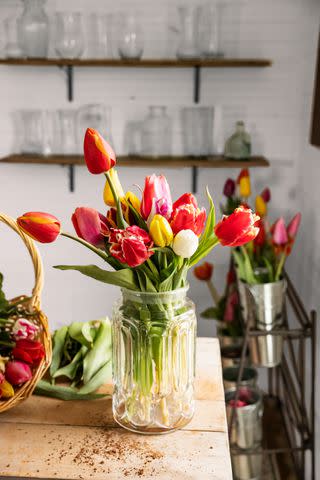
Robbie Caponetto
Natural Instinct: Tulips do the work for you when it comes to creating a beautiful bouquet. Place an assortment of the flowers into a wide-mouthed vessel, letting them fall loosely.Arrange With Ease
Tulips are best known for their subtle drama. It’s hard to go wrong with a casual bouquet in a mix of vivid hues, but be wary of picking already open flowers. “You want to get them when they’re still tightly closed and just starting to show color to maximize their vase life,” explains Kaylee.
The Brightest Bulbs
Find these varieties at Hubert Family Farms
‘Dee Jay Parrot’
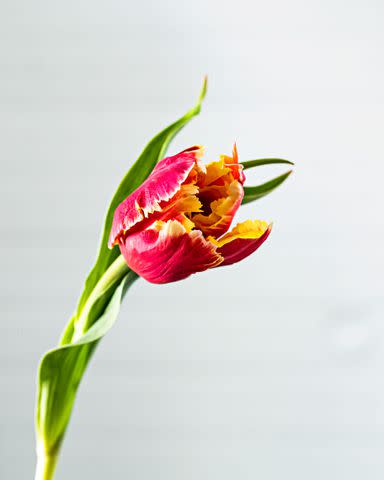
Robbie Caponetto
Crowd favorites for their flamboyant hues and fringed edges, these attention-grabbing petals go from bright red into creamy yellow to white at the tips.
‘Gavota’
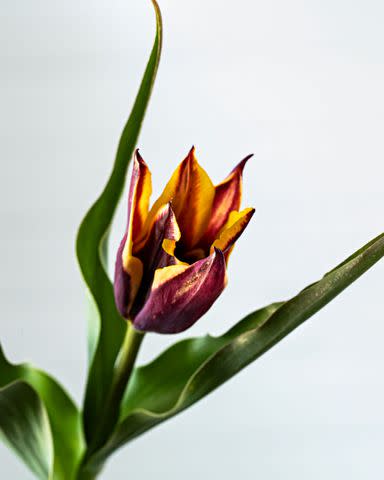
Robbie Caponetto
While they might be hard to find, their sophisticated flair is unlike any other type. People gravitate toward the color combo of plum and golden yellow.
‘Split’
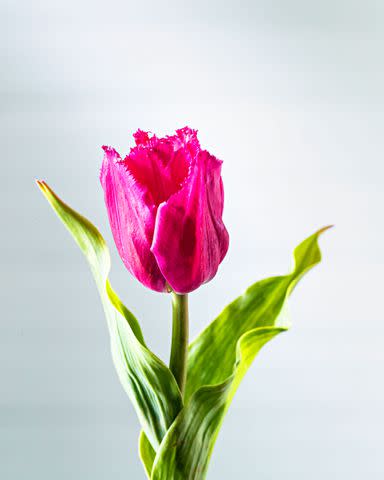
Robbie Caponetto
Considered fringed tulips, these have petals with distinct frayed edges that appear as though someone has sliced—or split—the tips.
‘Dream Touch’
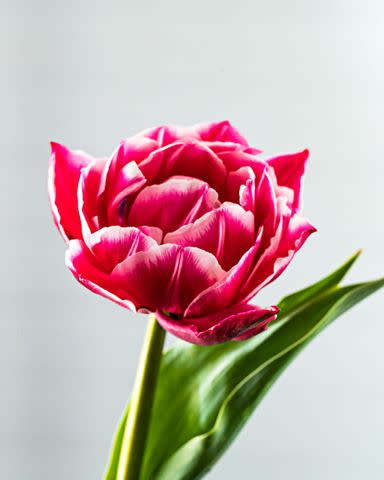
Robbie Caponetto
These gorgeous flowers feature extra petals, so they seem like they have a tulip within a tulip and closely resemble peonies.
‘Hella Lights’
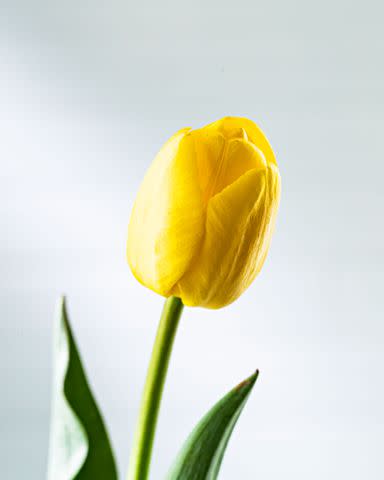
Robbie Caponetto
Cheerful in color, these classic Single Late tulips are some of the last to bloom. They’re popular for thriving in the Southern weather.
‘Dafeng’
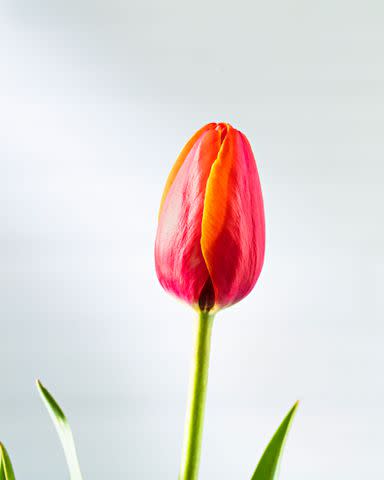
Robbie Caponetto
They flourish in Alabama’s climate with tall stems and particularly large blooms in bold tropical shades of red, orange, and yellow.
For more Southern Living news, make sure to sign up for our newsletter!
Read the original article on Southern Living.